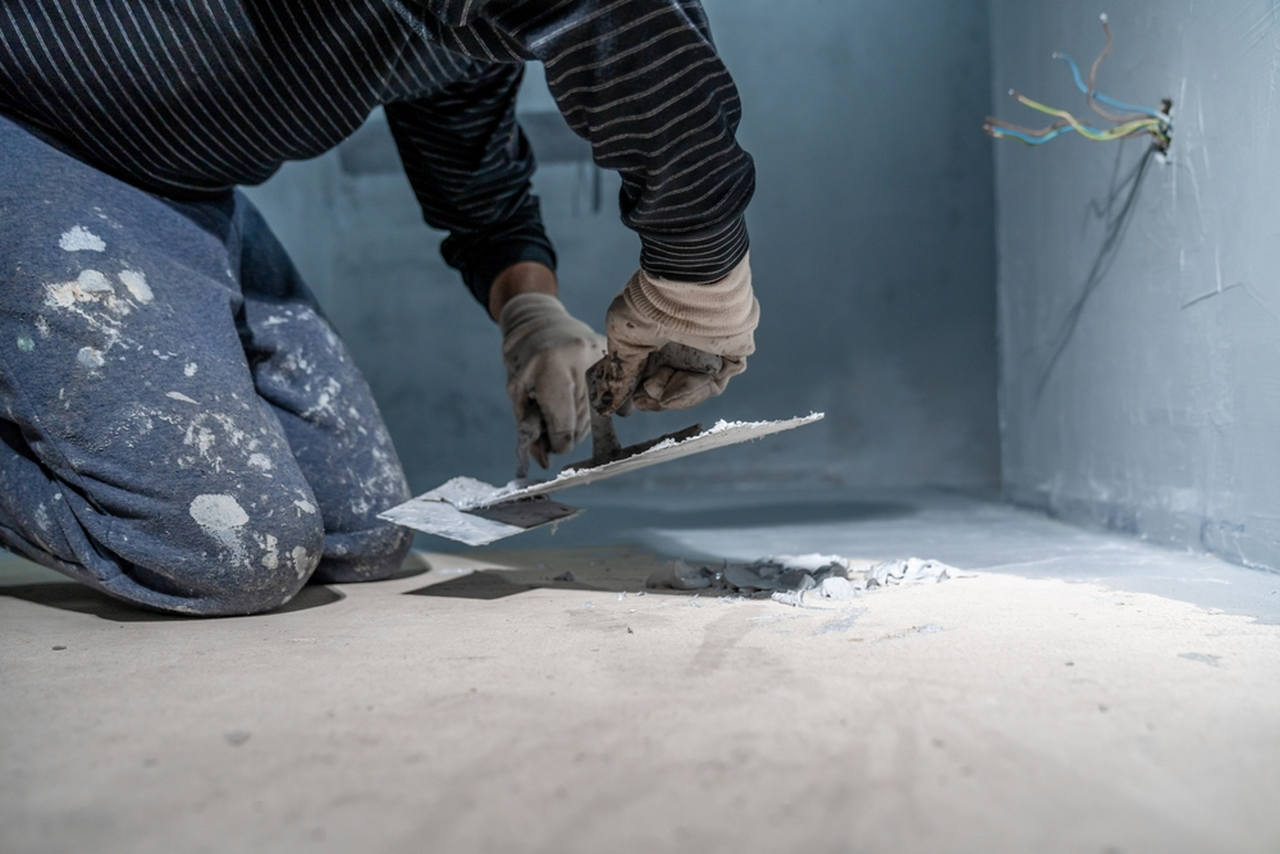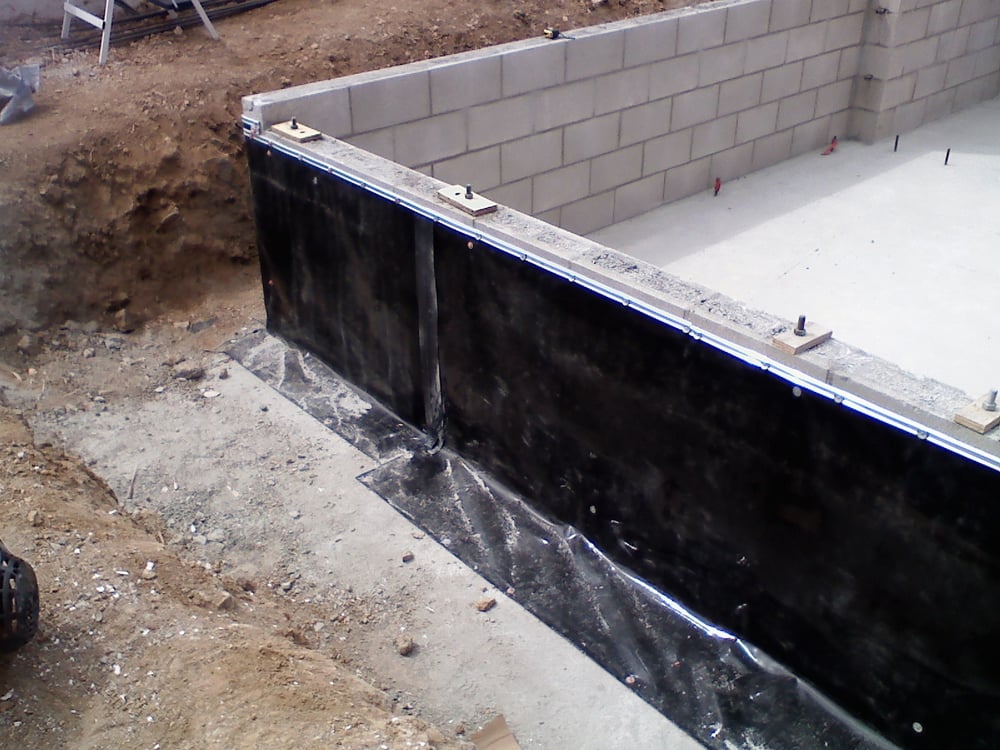Foundation waterproofing Omaha: Why It Matters
Just How Waterproofing Functions: An In-depth Consider Methods and Technologies
Waterproofing is vital for safeguarding structures from moisture-related damage. It entails different methods and innovations that create obstacles versus water intrusion. Typical methods, such as compressed clay, exist side-by-side with modern innovations like liquid-applied membrane layers. Comprehending the nuances of these approaches is essential for efficient application. The performance of any waterproofing remedy hinges not just on the methods made use of however additionally on continuous upkeep and assessment. What are the key aspects that influence long-lasting performance?
Comprehending the Basics of Waterproofing
Waterproofing is a crucial process that shields structures from water breach, which can lead to considerable damages in time. This approach involves the application of different products and techniques created to develop a barrier against wetness. The key goal is to stop water from passing through surfaces, which can cause degeneration, mold and mildew growth, and structural instability.Various aspects affect the selection of waterproofing method, including the type of framework, its area, and ecological conditions. Understanding the physics of water movement and the residential properties of various materials is critical in choosing a reliable waterproofing solution.Effective waterproofing not only safeguards buildings however likewise improves their durability and stability. Commonly, it is incorporated right into the layout stage of construction to guarantee extensive security. As awareness of water-related issues expands, the relevance of recognizing waterproofing principles comes to be significantly clear to engineers, building contractors, and home owners alike.
Conventional Waterproofing Methods
Traditional waterproofing approaches have actually been used for centuries, depending on time-tested strategies and products to protect structures from water damages. One of the oldest approaches includes the use of clay, which, when compressed, develops a natural obstacle against moisture. Additionally, asphalt, a sticky, black material originated from oil, has been used for its waterproof residential properties, commonly applied to roof coverings and foundations.Another method involves the application of lime-based plasters, which supply a breathable layer that allows dampness to leave while preventing water ingress. Thatch roof covering, a standard method still seen in some societies, offers superb waterproofing because of its snugly packed straw layers.Moreover, the usage of stone and block has actually been famous, as these products are naturally resistant to water when appropriately set up. Generally, standard waterproofing methods highlight the importance of choosing ideal materials and building techniques to enhance longevity against water invasion.
Modern Waterproofing Technologies
Innovations in modern waterproofing innovations have actually changed the way structures are secured from water damages. Cutting-edge methods such as liquid-applied membranes and sophisticated sealers have actually boosted the effectiveness and flexibility of waterproofing options. These innovations permit smooth application, reducing the risk of leaks and ensuring extensive protection over complicated surfaces.Moreover, the combination of wise innovations, such as wetness sensing units and automated tracking systems, allows real-time evaluation of waterproofing efficiency. This aggressive approach promotes prompt upkeep and minimizes lasting repair service costs.Additionally, improvements in spray-applied finishes use quick application and outstanding adhesion, adjusting to numerous substratums while offering robust defense. Methods like polymer-modified systems even more enhance adaptability and longevity, making them appropriate for diverse environments. On the whole, contemporary waterproofing technologies not only minimize water invasion but additionally add to the longevity and sustainability of frameworks, noting a considerable change in the sector.
Materials Used in Waterproofing
The performance of waterproofing options heavily relies upon the materials made use of in their application. Numerous materials are employed to produce obstacles against water access, each with distinct homes suited for different settings. Typically made use of materials include membrane layers, finishings, and sealants.Liquid-applied membrane layers, frequently made from polyurethane or acrylic, create a seamless barrier that adjusts to complex surfaces. Sheet membrane layers, typically built from rubber or polycarbonate, deal sturdiness and are excellent for larger areas. Furthermore, cementitious waterproofing products, made up of cementitious compounds, offer superb adhesion and flexibility.Sealants made from silicone or polyurethane are vital for joints and joints, making certain thorough security. Additionally, innovative materials, such as geo-composite membranes, combine several functions, improving efficiency. Overall, the selection of waterproofing materials is vital in achieving lasting and effective water resistance, tailored to specific project requirements and environmental conditions.
Common Applications of Waterproofing
Waterproofing plays a vital function in different markets, making certain the long life and integrity of frameworks. Usual applications consist of website here household remedies that secure homes, industrial facilities that safeguards companies, and industrial setups that call for robust protection against dampness. Comprehending these applications highlights the significance of waterproofing in maintaining both safety and security and capability throughout different settings.
Residential Waterproofing Solutions
Lots of house owners deal with challenges with dampness invasion, making effective property waterproofing services vital. Numerous techniques exist to resolve this problem, consisting of inside and exterior waterproofing systems. Inside services usually include the application of sealants and finishes to basement wall surfaces, which help protect against water seepage. Outside methods commonly consist of the setup of water drainage systems and water resistant membrane layers that divert water far from the foundation.Additionally, property owners might consider sump pumps to eliminate water buildup and dehumidifiers to manage moisture degrees. Appropriate grading and the usage of gutters likewise play an important function in taking care of water flow around the home. By carrying out these strategies, house owners can greatly minimize the threat of water damage and mold growth, making sure a completely dry and safe living atmosphere.

Industrial Infrastructure Protection
Efficient waterproofing services play a critical function in the protection of industrial framework. Sump pump discharge drainage Omaha. These techniques are vital for safeguarding buildings, car park structures, and bridges from water damage, which can endanger architectural integrity and result in expensive fixings. Common applications include the setup of membrane layers, layers, and sealants that produce barriers against wetness seepage. Locations such as cellars, roofs, and exterior walls are typically focused on to assure long life and durability. Additionally, waterproofing systems can enhance energy efficiency by avoiding water-related problems that may cause mold growth and degeneration. By carrying out durable waterproofing procedures, homeowner can shield their financial investments and keep functional effectiveness, eventually contributing to the overall sustainability of business centers
Industrial Applications Introduction
While different sectors deal with unique difficulties, the demand for trustworthy waterproofing services continues to be a constant in industrial applications. Industries such as production, construction, and energy usually experience atmospheres where moisture direct exposure can jeopardize structural stability and functional efficiency. In producing facilities, waterproofing is crucial for securing equipment and materials from water damages. In construction, it safeguards foundations and cellars versus groundwater seepage. The power sector relies upon waterproofing for the security of tools in hydroelectric plants and overseas frameworks. Additionally, food processing markets use waterproofing to assure health and conformity with safety standards. Generally, efficient waterproofing remedies are essential for enhancing longevity, safety, and efficiency throughout different commercial setups.
Upkeep and Durability of Waterproofing Solutions
Waterproofing remedies are created to use long-lasting protection versus wetness intrusion, normal upkeep is crucial to ensure their effectiveness and long life. Routine inspections play a significant duty in determining potential problems such as cracks, peeling off, or indications of water damages. Attending to these problems without delay can stop additional wear and tear and costly repairs.Additionally, cleansing mapei aquadefense the surface area of waterproofed locations helps get rid of dirt and debris that might compromise the honesty of the waterproofing barrier. It's additionally recommended to reapply safety finishes or sealants as recommended by suppliers to maintain optimal efficiency. Ecological aspects, such as UV exposure and extreme weather, can impact the life-span of waterproofing products, making regular evaluation essential
Frequently Asked Concerns
Can Waterproofing Be Applied in Winter?
The concern of using waterproofing in winter raises worries concerning attachment and curing. Numerous products may not do at their ideal in reduced temperatures, More Help necessitating cautious choice and factor to consider of details standards for effective application.
For How Long Does Waterproofing Usually Last?
The period of waterproofing efficiency differs based upon materials and environmental aspects. Normally, it can last from 5 to 10 years, however routine maintenance and assessments are vital to assure peak efficiency and long life.
Is Do It Yourself Waterproofing Effective and Safe?
The efficiency and security of DIY waterproofing depend on various factors, consisting of worldly top quality and application method. While some individuals accomplish adequate results, others may come across problems that compromise lasting defense and architectural stability.
What Are the Indications of Failing Waterproofing?
Indications of stopping working waterproofing include noticeable water spots, peeling paint, mold and mildew development, moldy odors, and wetness in wall surfaces or ceilings - Water Solutions. These indications suggest compromised obstacles, necessitating punctual evaluation and possible remediation to prevent more damage
Just how Do I Choose the Right Waterproofing Service Provider?
